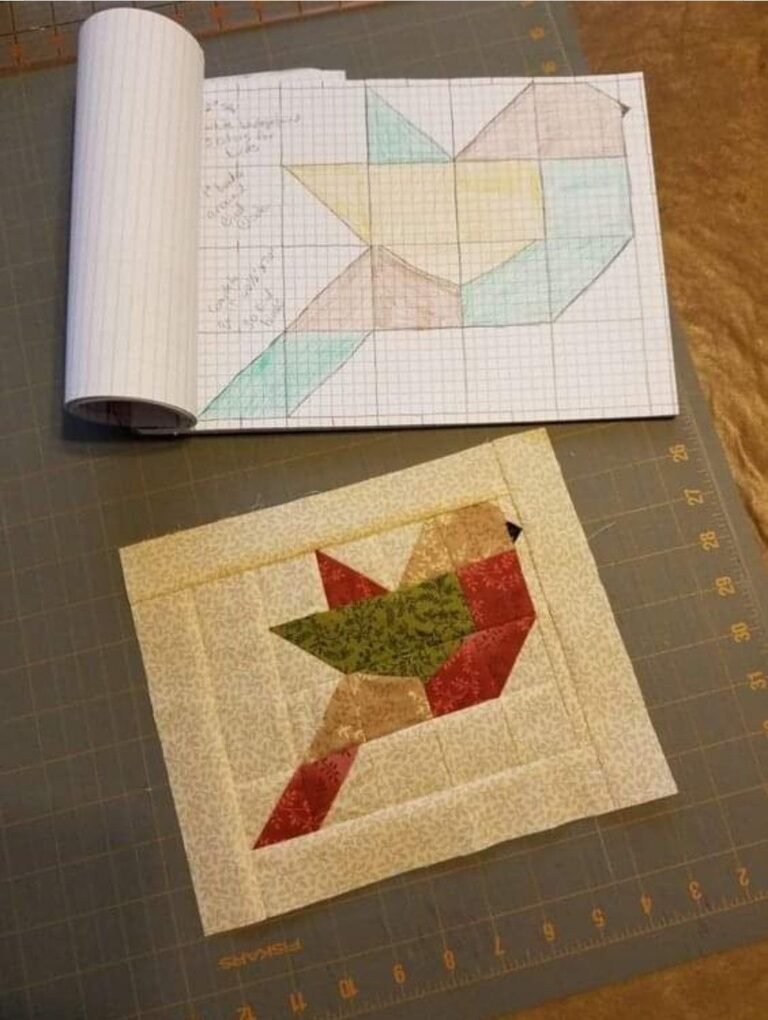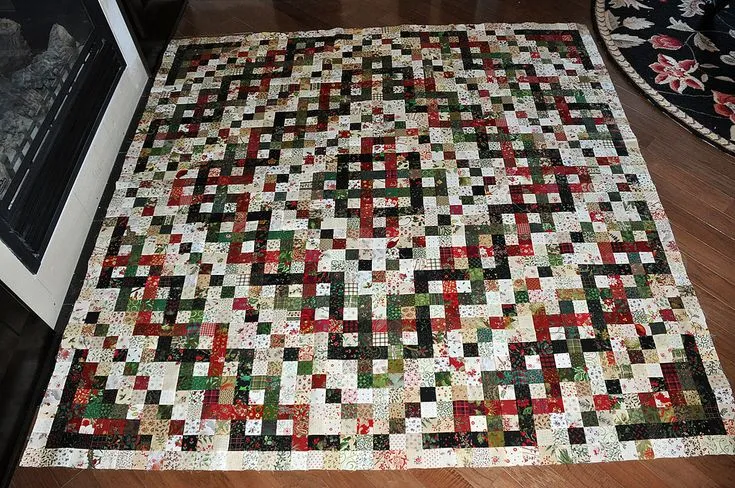
The Trinity Celtic Knot pattern is one of the most fascinating and symbolic designs in the world of Celtic art and crafts. Known for its elegant loops and spiritual meaning, this knot represents unity, eternity, and the interconnectedness of life.
Whether you are learning how to crochet, embroider, or draw this design, understanding its deep roots and how to recreate it step by step can make your project even more special.
The Trinity Celtic Knot is not just a pattern — it is a symbol that carries centuries of history, artistry, and inspiration.

In this article, we will explore the history, meaning, and crafting techniques behind the Trinity Celtic Knot pattern, as well as how to incorporate it into various creative projects.
You’ll also learn how to make it through a workshop-style guide that can be followed by beginners and advanced crafters alike. The beauty of this pattern lies in its endless loops, making it a timeless choice for jewelry, textiles, and even digital art.
Before diving into the detailed techniques, it’s important to understand why the Trinity Celtic Knot continues to inspire artisans today. Its seamless form — with no beginning or end — reflects eternal love, spiritual growth, and balance. Many cultures have adopted it for its universal appeal and peaceful symmetry. Whether you’re making it for personal use or as a gift, this pattern will add a meaningful and artistic touch to your craftwork.
The Trinity Celtic Knot (also known as the Triquetra) holds deep meaning across history and cultures. Originally, it was used by the Celts to symbolize the triad — a concept representing three interwoven elements such as earth, sea, and sky, or life, death, and rebirth. Its interlocking lines show that these elements are inseparable and eternally connected. For many people, the Trinity Knot also represents unity, faith, and protection.
In Christianity, this knot was later used to symbolize the Holy Trinity — the Father, the Son, and the Holy Spirit. Its perfect symmetry reflects divine harmony and eternal life. In pagan traditions, it represents the triple goddess — maiden, mother, and crone — highlighting the natural cycle of womanhood and the moon’s phases. No matter the belief system, this pattern beautifully conveys a universal message of balance and continuity.
Beyond religion, the Trinity Celtic Knot has also been appreciated for its artistic and geometric beauty. Designers use it in tattoos, jewelry, clothing, and even architecture to convey a sense of timelessness and spiritual depth. Each loop flows into the next, creating a continuous path that reminds us of how all aspects of life are interwoven.
When used in crafts such as embroidery or crochet, the Trinity Celtic Knot pattern brings a meditative element to the creative process. The repetitive motions of looping and interlacing mirror the philosophical meaning behind the design itself — a rhythm of creation and connection. By focusing on each loop, crafters often describe the experience as both relaxing and deeply meaningful.
Crafting the Trinity Celtic Knot pattern can be both a technical and artistic journey. To start, you’ll need to understand the basic structure of the knot — three interlocking loops forming a triangular shape. Whether you are drawing it by hand, stitching it into fabric, or designing it digitally, the core steps are similar.
Begin by sketching three overlapping arcs that form a central triangular point. The lines should be smooth and evenly curved, ensuring that each loop flows naturally into the next. This will form the foundation of your Trinity Knot pattern. Once the basic shape is established, start weaving the lines under and over each other to create the illusion of interlacing. This step is crucial for achieving the traditional Celtic look.
For those who love crochet or embroidery, use a contrasting color thread to highlight the interwoven sections. This will emphasize the 3D effect of the knot. It’s also helpful to use a grid or template to maintain symmetry throughout the design. If you’re working on a large piece, such as a wall hanging or table runner, marking key points with chalk or a light pencil can help guide your stitching.
In crochet, the Trinity Knot motif can be created using chain stitches, slip stitches, and single crochets. You can form the loops separately and then join them at the center using a yarn needle. This method allows flexibility in color choices — for example, using shades of green, gold, or ivory to give a traditional Celtic aesthetic.
Digital artists and graphic designers can recreate the Trinity Celtic Knot pattern using vector tools or design software. By adjusting symmetry, stroke thickness, and color gradients, you can create a modern interpretation while maintaining its traditional essence. This makes the pattern versatile for use in logos, invitations, or decorative prints.
Joining a Trinity Celtic Knot workshop can be an enriching experience for both beginners and experienced crafters. These workshops often combine history, art, and hands-on learning. Participants not only create their own knot designs but also gain insight into the cultural significance behind each pattern.
A typical workshop begins with an introduction to Celtic art and the history of the knotwork. Instructors often explain the symbolic meanings and show various examples from ancient manuscripts, jewelry, and carvings. This context helps participants appreciate the depth and purpose of their craft.
Next comes the practical session, where participants learn to draw or weave their own Trinity Knot. Depending on the workshop type, materials might include yarn, thread, wire, or digital tools. The instructor demonstrates how to build the knot step by step, guiding students through each loop and connection.
Hands-on practice is key in these workshops. Participants are encouraged to experiment with colors and patterns, giving their Trinity Knot a personal touch. Some workshops even incorporate meditation or storytelling, making the process both creative and spiritual.
Workshops are also great opportunities to connect with others who share a passion for Celtic art. Sharing ideas, techniques, and stories adds a social and inspiring element to the experience. Many participants leave not only with a completed project but also with a deeper appreciation for the artistry and meaning of Celtic design.
Whether in person or online, attending a Trinity Celtic Knot workshop provides valuable knowledge and confidence. It’s a great way to learn practical techniques while embracing the meditative flow that this pattern encourages.
The Trinity Celtic Knot pattern is incredibly versatile and can be adapted to countless creative projects. Its timeless elegance makes it suitable for home décor, accessories, or even gifts. If you enjoy crafting, here are several ways to incorporate this pattern into your work.
One popular choice is embroidery. The interlocking loops of the Trinity Knot look stunning when stitched on cushion covers, wall art, or clothing. Using metallic or gradient threads adds a luxurious effect that highlights the knot’s symmetry.
Another beautiful application is jewelry making. You can create pendants, earrings, or bracelets featuring the Trinity Knot design. Whether in silver, gold, or braided cord, this motif adds a touch of mysticism and beauty to any accessory.
Crochet enthusiasts can use the Trinity Celtic Knot motif to design table mats, coasters, or appliqués for bags and blankets. The repeating pattern creates a beautiful texture that’s both traditional and modern. You can also experiment with color gradients to add depth and contrast.
If you enjoy painting or digital illustration, try incorporating the Trinity Knot pattern into mandalas or background designs. It blends perfectly with floral and geometric elements, symbolizing balance and harmony.
Lastly, woodworkers and carvers often use the Trinity Knot in furniture, décor, or ceremonial objects. Its flowing lines and historical significance make it a favorite for traditional and spiritual themes.
Whatever your medium, this pattern brings meaning and visual balance to any piece. It represents not only artistic skill but also a connection to something greater — the cycle of life and eternity.
What does the Trinity Celtic Knot symbolize?
It represents eternal life, unity, and interconnectedness. It often stands for concepts like mind, body, and spirit or earth, sea, and sky.
Is the Trinity Knot religious?
It holds spiritual meaning in multiple traditions — both pagan and Christian — symbolizing the Holy Trinity or the triple goddess, depending on the context.
Can beginners learn to make the Trinity Knot pattern?
Yes! With simple guides or workshops, anyone can learn to draw, crochet, or embroider the Trinity Knot pattern, even with minimal experience.
What materials are best for crafting the Trinity Celtic Knot?
Common materials include yarn, embroidery thread, jewelry wire, wood, or digital tools depending on the type of project you’re creating.
Can I use the Trinity Knot in modern designs?
Absolutely. This ancient pattern adapts beautifully to modern art, fashion, and design, maintaining its traditional charm while fitting contemporary styles.
The Trinity Celtic Knot pattern is more than just an artistic design — it is a timeless expression of balance, eternity, and connection. Whether you explore it through a workshop or as a personal creative project, crafting this symbol allows you to experience both art and meaning in a unique way. From embroidery to digital illustration, each loop carries history, culture, and personal reflection.
We hope this guide has inspired you to try creating your own Trinity Celtic Knot. Share your thoughts, experiences, or suggestions in the comments — your feedback helps keep this ancient art alive and evolving.
